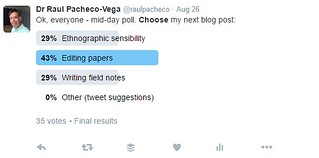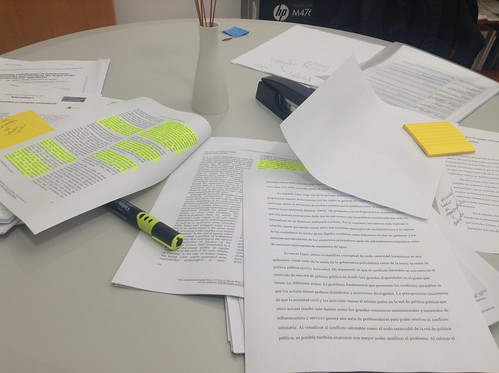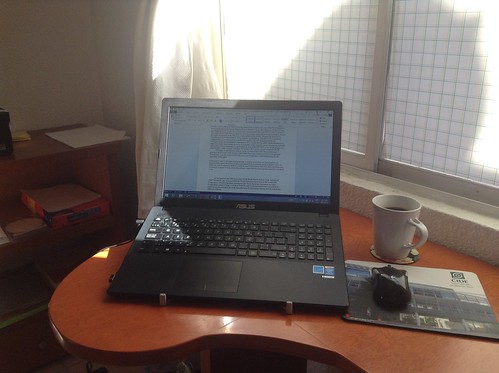 I was asked to write about tips for editing a research paper, since my Academic Writing and Literature Review posts seem to be quite popular. I have to confess that I don’t have any particularly insightful piece of advice to give, because here is the kicker: I HATE EDITING MY OWN PAPERS.
I was asked to write about tips for editing a research paper, since my Academic Writing and Literature Review posts seem to be quite popular. I have to confess that I don’t have any particularly insightful piece of advice to give, because here is the kicker: I HATE EDITING MY OWN PAPERS.
I do it, quite obviously, and when I do it, I do it by hand and on paper. But the truth is, I don’t think I’m particularly good at editing my own work. I hate cutting sentences and cleaning text. I love my writing and it’s painful to see it go. It sometimes takes me a long while because I procrastinate about doing small and minor changes. It’s WAY easier for me to generate new text than to edit my own. I much rather pin needles on my skin than to have to edit a paper. But given the task, here’s what I usually do. At the end of the post I have included a few links related to advice on how to edit a paper.
In short, my process looks something like this:
1. I read the paper (or whatever I have as a draft) once at the beginning of the editing session. This post on 8 sequential steps to write a research paper may help you with the initial drafting.
2. I plan my edits (with the help of a Drafts Review Matrix)
3. I break down the tasks that I need to undertake by day, and
4. Once I start editing, I edit by hand. Yes, with pen and paper and sticky notes.
5. I use the Drafts Review Matrix and my Weekly and Daily Plan (yes, the one that is in my Everything Notebook) to work on whichever piece of editing I need to do on a particular day.
6. Once I’ve finished a round of editing I either send it back to my coauthor, or I send it out for someone else to read and review it.
I am a combination of an analog and digital scholar, so I usually print my draft paper in whichever form I have it and scribble notes on the margins. I usually mark wherever I’m supposed to be doing a major edit with a pointy-arrow Post It note. That way I can visually see where I should be taking steps to undertake major work.
I write a list of those pieces of major work (e.g. re-do a map, re-do a data analysis, check my coding, re-read a particular article that may counter my argument). I dump that list into my Drafts Review Matrix, but I also schedule time for each piece of work. I try to break down the major revisions into smaller components (e.g. “clean up the Mendeley database references pertaining to bottled water” or “insert correct map” or “revise map in QGIS and insert different layer”). It’s easier to edit when you know you only have to finish ONE piece of work at a time.
Once my Drafts Review Matrix is completely checked out (e.g. I have finalized all required edits by the reviewer or the editor or myself as an author), I print out a new version and read it again. If it makes enough sense, then I send it back to my coauthor or to someone I trust for a solid read. Then I submit the revisions.
I know for a fact that my process is time-consuming, but it is also what helps me do better work. I do take time to reflect on each edit I am doing. I’m a proponent of the Slow Scholarship movement and therefore I try to make sure my edits are well thought out. Otherwise, I think my work will suffer.
Here are a few links on editing a research (academic) paper that might be of interest:
- On revising the content and doing line-editing, this piece by LifeHacker is interesting.
- A handout by the University of Washington Odegaard Writing & Research Center on why and how to edit and revise.
- A nice piece on editing and proofreading by the The Writing Center at UNC-Chapel Hill on editing tips.
- A great guide by the University of Toronto Writing Center on style and editing.
UPDATE – I have upgraded my Drafts Review Matrix. You may want to check this blog post.



0 Responses
Stay in touch with the conversation, subscribe to the RSS feed for comments on this post.